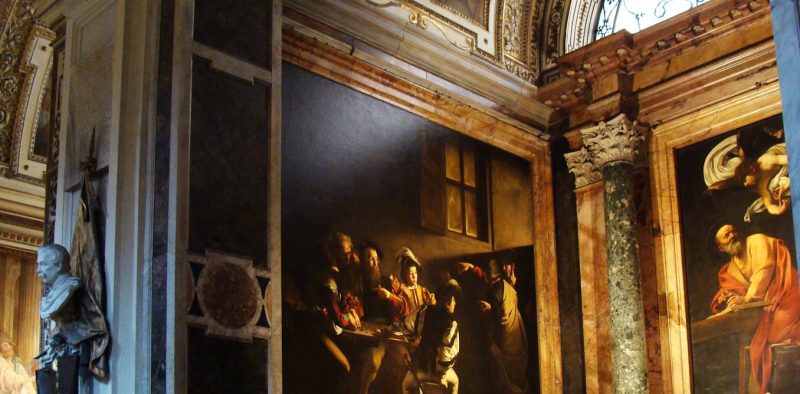
Pope Francis, a known art aficionado, held a deep appreciation for Caravaggio’s ‘The Calling of Saint Matthew,’ a masterpiece housed in the Church of San Luigi dei Francesi in Rome. His admiration, detailed in his 2025 biography, *Hope*, reveals a connection far beyond aesthetic pleasure. The painting’s powerful imagery resonated deeply with the Pope’s own spiritual journey and his Jesuit training.
The painting, commissioned in 1599, depicts the moment Christ calls Matthew, a tax collector – a profession considered dubious at the time – to become one of his disciples. The scene unfolds with dramatic realism, characteristic of Caravaggio’s Baroque style. Christ, appearing only as a silhouetted figure, points towards Matthew, who sits amidst a group of men engrossed in counting money. Matthew’s surprised and questioning gesture perfectly captures the transformative nature of the divine call.
The Pope’s choice of papal motto, “miserando atque eligendo” – “looking at him with mercy, he chose him” – directly echoes the painting’s central theme. This phrase, from a sermon by Bede the Venerable, perfectly encapsulates the divine grace and mercy depicted in Caravaggio’s work. The scene isn’t just a historical event; it’s a powerful depiction of God’s ability to see potential even in the most unlikely of individuals.
Francis’s Jesuit background further illuminates his connection to the artwork. Jesuits emphasize the process of “discernment,” a journey of seeking God’s will. ‘The Calling of Saint Matthew’ serves as a visual representation of this process, showing Matthew grappling with a life-altering decision. This resonates with Francis’s own life and the principles of the Jesuit order, founded by Ignatius of Loyola, whose own life was a testament to seeking God’s purpose.
The painting’s impact is also amplified by Caravaggio’s masterful use of light and shadow, and his depiction of contemporary figures dressed in the clothing of late 16th-century Italy. This realistic portrayal creates a sense of immediacy and allows viewers to connect with the scene on a deeply personal level, fostering empathy and understanding. The figures are not distant historical figures, but individuals who could have been their contemporaries.
Caravaggio’s other works within the same chapel, such as ‘The Inspiration of Saint Matthew,’ further illustrate the artist’s ability to capture the spiritual struggle and eventual enlightenment of the saint. The depiction of Matthew, struggling to write his Gospel with an angel guiding him, mirrors the ongoing search for God’s will. The angel’s gesture emphasizes the importance of the task at hand, a message that resonates with the contemplative nature of the Jesuit tradition.
Ultimately, Pope Francis’s love for Caravaggio’s ‘The Calling of Saint Matthew’ reveals a profound connection between faith, art, and personal experience. The painting’s enduring power lies in its ability to transcend time and speak to the universal human experience of seeking meaning and purpose. It’s a testament to the power of art to inspire, challenge, and ultimately, connect us with something larger than ourselves.










